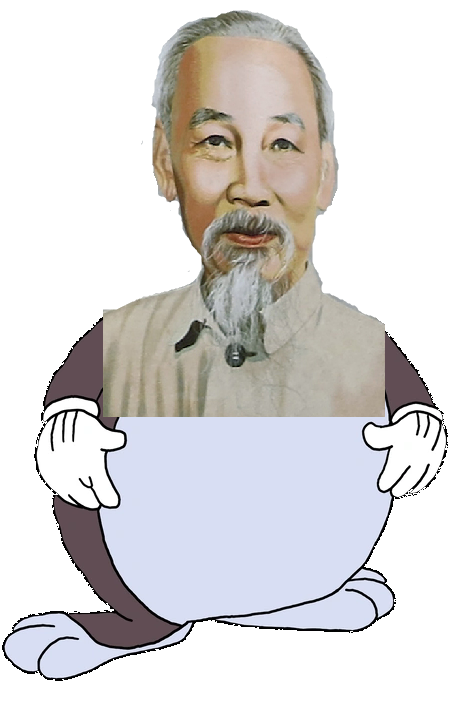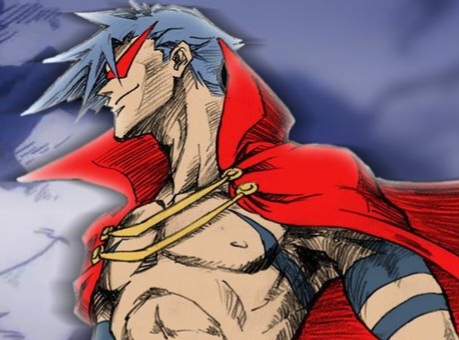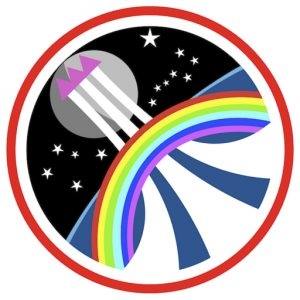The Bangladesh Liberation War was a revolution and armed conflict sparked by the rise of the Bengali nationalist and self-determination movement in East Pakistan, which resulted in the independence of Bangladesh. The war began when the Pakistani military junta based in West Pakistan—under the orders of Yahya Khan—launched Operation Searchlight against the people of East Pakistan on the night of 25 March 1971, initiating the Bangladesh genocide.
December 16, 1971 marked the end of the Bangladesh Liberation War, a short-lived conflict between India and Pakistan that established the People’s Republic of Bangladesh from the territory of the former province of East Pakistan.
Although the war is best remembered for its dramatic alteration of South Asia’s geopolitical landscape, it also bears a more complex and lesser-known set of legacies for how we think about Cold War international relations, twentieth-century genocidal and sexual violence, and the limits of international law in post-conflict societies.
The province East Pakistan was created during independence from the British empire in 1947. At that time, the South Asian subcontinent was partitioned into two countries: India (including lands with a Hindu majority) and Pakistan (lands with a Muslim majority). The people and territory of East Bengal became East Pakistan.
East and West Pakistan were geographically, culturally, and ideologically distant and distinct. An independence movement for East Pakistan grew up based on Bengal ethnic concerns, the right to use the Bengali language, and a desire for local political control and self-rule.
The seeds of political crisis that led to the Liberation War were planted on December 7, 1970. The Awami League won a substantial victory in Pakistan’s elections. The League was a political party led by Sheikh Mujibur Rahman, who had campaigned for autonomy for East Pakistan. However, they encountered immediate opposition from General Agha Muhammad Yahya Khan and Zulfikar Ali Bhutto of the Pakistan People’s Party, which attempted to prevent the Awami League from forming the next government.
After months of fruitless negotiations, the Pakistani army was deployed in East Pakistan on March 25, 1971. It pursued a policy of reprisal, targeting supporters of Bangladesh liberation and perceived enemies of the state like the significant Hindu minority.
Deploying weapons such as fighter jets, tanks, and napalm—and creating radical religious militias to participate in the systematic murder and deportation of the populace—the army of Pakistan committed war crimes that reached the level of genocide.
What began as an internecine conflict soon became an international one. A Bangladesh independence militia called the Mukti Bahini, which drew support from the government of India, often engaged in guerilla operations in East Pakistan from bases on the Indian side of the border.
With as many as 15 million refugees crossing into its territory by autumn 1971, India decided to intervene militarily in the autumn for “purely humanitarian reasons” according to Prime Minister Indira Gandhi. Pakistan preempted Indian action, however, by attacking northern India from West Pakistan on December 3.
Although the fighting lasted for only two weeks before a Pakistani surrender, the war became a flashpoint within the wider Cold War. Fearing that an Indian victory would pave the way for Soviet domination in the region, the United States did what it could to buttress Pakistan from the outset.
Nixon sent the aircraft carrier USS Enterprise to the Bay of Bengal, a move deemed by the Indians as a nuclear threat. Enterprise arrived on station on 11 December 1971. On 6 and 13 December, the Soviet Navy dispatched two groups of ships, armed with nuclear missiles, from Vladivostok; they trailed US Task Force 74 in the Indian Ocean from 18 December until 7 January 1972. It also refrained from criticizing the ongoing humanitarian crisis, publicly declaring between March and December that the conflict remained a Pakistani internal matter.
Even as American diplomats at the consulate in Dhaka futilely sounded the alarm over the ongoing “selective genocide,” the White House illegally transferred weapons to Pakistan in direct violation of a Congressional sanction. The U.S., in other words, was complicit in an unfolding humanitarian crisis of astounding magnitude.
Estimates of the death toll vary, stretching from hundreds of thousands to some 3 million. The memory of those events remains contested. The government of Pakistan has never acknowledged that any atrocities were committed during the war and continues to insist that only a few thousand people were killed. In the slim literature on the subject, scholars have debated whether the Pakistani army’s actions qualify as genocide and who should be held responsible.
In Bangladesh, the political consequences of the Liberation War continue to resonate. Awami League governments led by Sheikh Mujibur Rahman (known as Mujib, 1973-75) and Sheikh Hasina (1996-2001; 2009-present) have sought to punish those who collaborated with Pakistan and enacted the 1973 International Crimes (Tribunal) Act and the 2009 International Crimes (Tribunals) (Amendment) Act (ICTAA). By 1975, some 752 people had been convicted and imprisoned.
But, despite their names, these tribunals remained solely Bangladeshi in scope and have never been affiliated with the International Criminal Court, leading some observers to claim that the trials have not met international standards.
The legacy of the Liberation War continues to shape civic life in Bangladesh today. As trials have been conducted in recent years, there have been violent protests by both their opponents and by those demanding harsher sentences for those convicted. Since 2013, there have been a series of murders of prominent secularists and human rights activists by Islamists in what appears to be retaliation for the trials.
How America Facilitated a Genocide in Bangladesh :amerikkka:
Megathreads and spaces to hang out:
- ❤️ Come listen to music and Watch movies with your fellow Hexbears nerd, in Cy.tube
- 💖 Come talk in the New Monthly queer thread
- 🧡 Monthly Neurodiverse Megathread
- 💛 Read about a current topic in the news
- ⭐️ October Movie Nominations ⭐️
reminders:
- 💚 You nerds can join specific comms to see posts about all sorts of topics
- 💙 Hexbear’s algorithm prioritizes struggle sessions over upbears
- 💜 Sorting by new you nerd
- 🌈 If you ever want to make your own megathread, you can go here nerd
- 🐶 Join the unofficial Hexbear-adjacent Mastodon instance toots.matapacos.dog
- ☮️ you can join the upcoming anti war rally this march
Links To Resources (Aid and Theory):
Aid:
- 💙Comprehensive list of resources for those in need of an abortion -- reddit link
- 💙Resources for Palestine
Theory:
:horror: adolf hitler in 1924 after i step out of my time machine to show him 21 jump street (he has now come to understand that antisemitism is bad and the holocaust has now been averted)
What's hilarious to me is how this was an Aqua Teen Hunger Force bit like a decade ago
Not even from a particularly good episode but that's how mid our beyond parody reality is
And now it’s up to you and Hitler to take on the rest of the nazi party (because they’re still furious antisemites) before they awaken their trump card: NeomechaHitler
damn. me and hitler got a lot of screenings of 21 jump street to show then
Hexbear sends data from the US to foreign countries, possibly even to China
Well, 5eyes probably scrapes the website, but i'm pretty sure they scrape everything.
No, it accesses the DPRK intranet through a secret connection.
I have a tin can with a string attached to it that goes all the way to Jong Un's hous in pyongyang.
Goodbye hexbear, I'm about to go outside for an extended period of time again on a trip my crush and I planned literally 1 day in advance, right after our last jaunt into the wilderness. It'll be too remote to post for a while but I expect a full report of the latest news/drama upon my full return (maybe 2 weeks from now? I might get reception sooner idk)
please water the plants
My Mom has told me that she would rather get fired than forcibly out a trans student of hers
I think somebody flirting with me on discord has made me realise that I'm definitely trans.
I'm unironically thd most cringe hexbear user, I unironically came out the closet because I started being someones discord kitten after she saw pictures of me naked on fedi and thought it would be funny to get me to call her mommy and now i'm falling in love with her :ooooooooooooooh:
i fucking challenge you to find a more cringe bear site user than me
@Biggs why must you bite me? it hurts me SO BAD because i love you SO MUCH
New Megathread Nerds!!! :posting:
-
🐶 Join the unofficial Hexbear-adjacent Mastodon instance toots.matapacos.dog
-
🌈 If you ever want to make your own megathread, you can go here nerd
@aaaaaaadjsf @Abraxiel @Abstraction @Acute_Engles @American_Communist22 @AnarchaPrincess @Antilope @Alaskaball @Aliveelectricwire @artificialset @bbnh69420 @BigLadKarlLiebknecht @buh @CatEars420 @cawsby @CDommunist @Cheesewizzard @Cherufe @ClimateChangeAnxiety @clover @comi @Commander_Data @ComradeCmdrPiggy @ComradeEchidna @context @congressbaseballfan @corgiwithalaptop @crime @Cromalin @CyborgMarx @Dawn_Beveridge @Dirt_Owl @Dolores @Donut @drinkinglakewater @Dryad @ElChapoDeChapo @ElGosso @el_principito @EmmaGoldman @FidelCashflow @Flinch @flowernet @forcequit @Frogmanfromlake @Gabbo @GalaxyBrain @ghosts @Goadstool @GomerPyle @GorbinOutOverHere @GoroAkechi @Grownbravy @GVAGUY3 @HarryLime @hexaflexagonbear @HoChiMaxh @Hohsia @Ho_Chi_Chungus @Ideology @InevitableSwing @iwillavengeyoufather @I_HATE_JOHN_CALVIN @jabrd @JamesConeZone @Kanna @Kaputnik @Koa_lala @kristina @LesbianLiberty @marxisthayaca
@MaxOS @MelaniaTrump @Mindfury @Nakoichi @PaulSmackage @plinky @PM_ME_YOUR_FOUCAULTS @PorkrollPosadist @President_Obama @PurrLure @Ram_The_Manparts @Redcuban1959 @RNAi
@Rojo27 @RoseColoredVoid @solaranus @SorosFootSoldier @Sickos @silent_water @Sphere @Spike @spring_rabbit @ssjmarx @take_five_seconds @TankieTanuki @Teekeeus @Tervell
@TheSpectreOfGay @ThisMachinePostsHog @ultraviolet @UlyssesT @Venustum @viva_la_juche @WhatDoYouMeanPodcast @Wheaties @WhyEssEff @WIIHAPPYFEW @wtypstanaccount04 @wombat @Yanqui_UXO @Zoift @Zuzak@thelastaxolotl @WhoaSlowDownMaurice @Quimby @Lydia
@CARCOSA @liberal @ella @all_that_is_solid @KenBonesWildRide @KiraNerys @TomboyShulk @DuckNuckem @SapGreen @Zangief @scumlord @COMMENT @Antisocial_Socialist @DOPESMOKERDENG
Remember nerds, no current struggle session discussion here on the general megathread, i will ban you from the comm and remove your comment, have a good day/night :meow-coffee:
You should add that in response to the US warships, the USSR sent its own, forcing a stalemate and allowing India to enter the war.
Nixon sent the aircraft carrier USS Enterprise to the Bay of Bengal, a move deemed by the Indians as a nuclear threat. Enterprise arrived on station on 11 December 1971. On 6 and 13 December, the Soviet Navy dispatched two groups of ships, armed with nuclear missiles, from Vladivostok; they trailed US Task Force 74 in the Indian Ocean from 18 December until 7 January 1972.
-
New funniest terf post dropped.
Getting into an argument about an art project that makes casts of vaginas by singling out one to say "this is clearly a trans vagina and should not be included because it misleads the public as to what a healthy vagina looks like", followed by a cis woman answering "hey this looks just like the one I was born with?".
To which the response was, 100% no embellishment, "No it doesnt, check again".
This is the reply that I directly quoted, you can backtrack from there
NSFW warning obviously that the thread is about statues/plaster casts of vaginas, you're gonna see close ups of vaginas even if its for an art project.
And also warning for TERF-adjacent language, the lady never goes full out and invalidates trans women or calls them men or anything, but the whole thread IS about her calling post-op vaginas "mutilated/mutilated-looking".
Lol what the hell, that literally just looks like a normal vulva. Tons of women have parts that look just like that
cw: animal abuse
spoiler
learned a few days ago that the memphis zoo is apparently just slowly killing two pandas via neglect for what I can only assume is racist reasons. Just watching two pandas die from worms and mistreatment and refusing to do anything about it. what a sick disgusting country :what-the-hell:
Edit: apparently one died back in February. RIP LeLe, hopefully the zookeepers responsible jump off a bridge.
Got danged Chiner and tiktok spying on good white men, teach these pandas a lesson!
Oh shit. I thought China had really serious "do not fuck with our pandas" stance. : (
Guy who's pro-war but only because he hates troops: "Fuck the troops, send them abroad!"
"I can't believe there are 'leftists' who think people should be able to sign up to support an imperialist war machine and then be able to lounge around a base all day collecting a pay check."
This is a dumb bit.


















